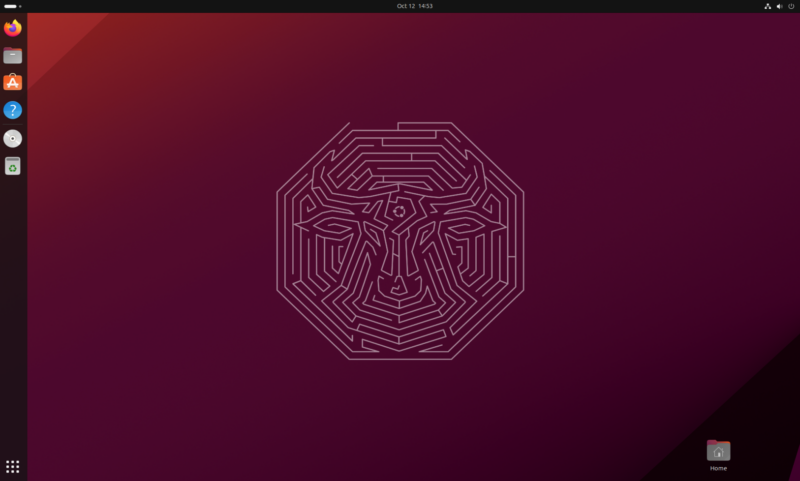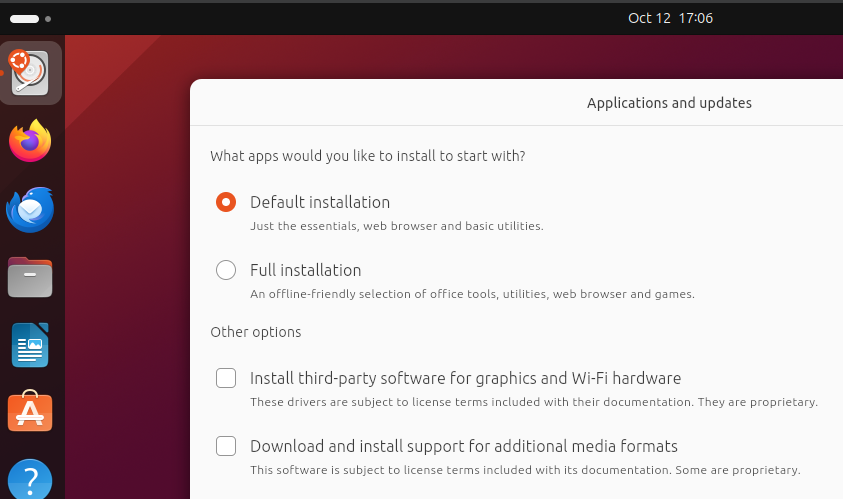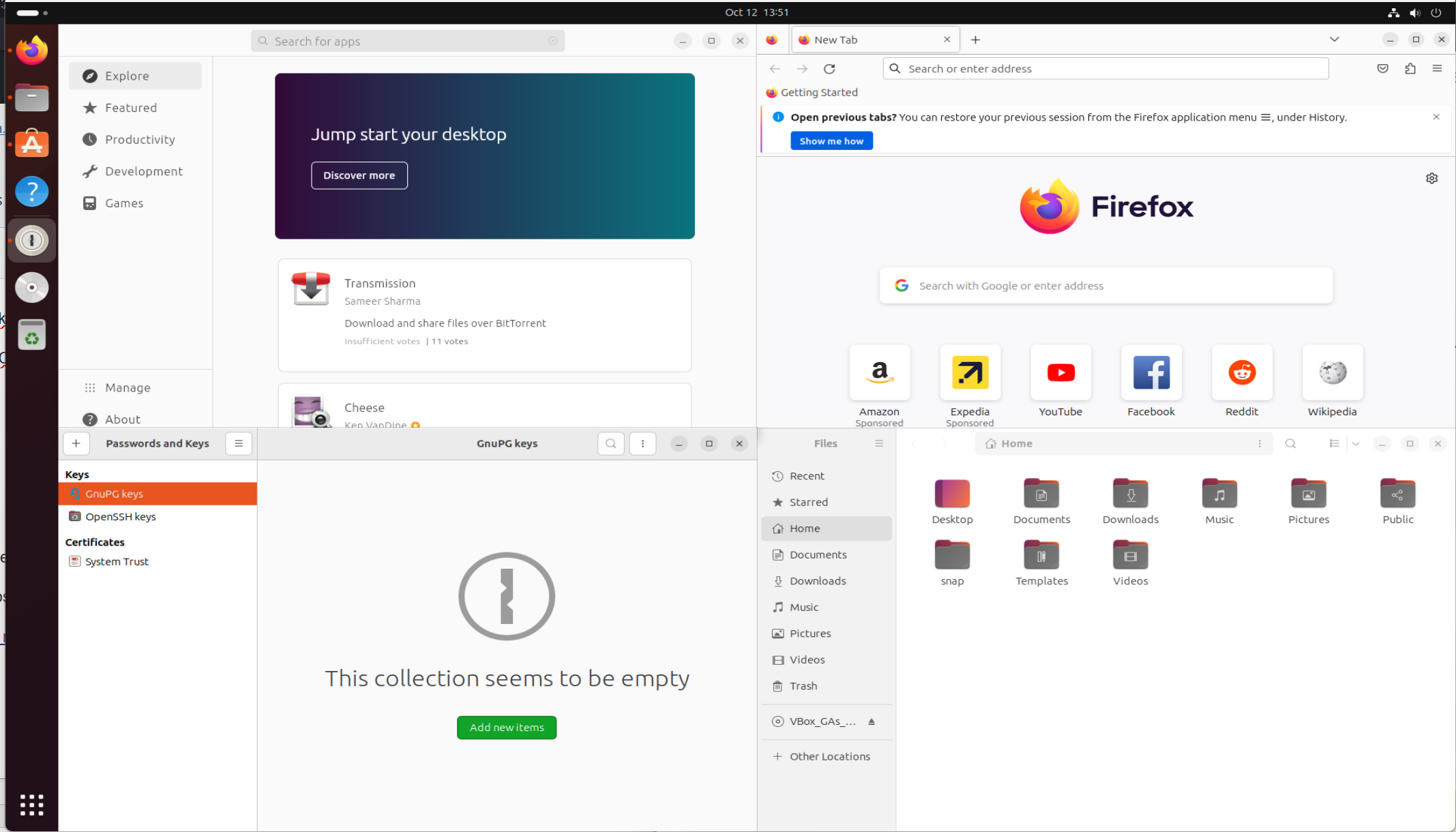
Ubuntu 23.10, codenamed Mantic Minotaur, is the 39th Ubuntu release, and it’s one of the three smaller interim releases Canonical puts out between long-term support (LTS) versions. This last interim before the next LTS doesn’t stand out with bold features you can identify at a glance. But it does set up some useful options and upgrades that should persist in Ubuntu for some time.

Your new installation options in Ubuntu 23.10. Neither of them is “Minimal,” but that might be coming.
Slimmed down and Flutter-ed up
Two of the biggest changes in Ubuntu 23.10 are in the installer. Ubuntu now defaults to a “Default installation,” which is quite different from what the “default” was even just one release prior. “Default” is described as “Just the essentials, web browser, and basic utilities,” while “Full” is “An offline-friendly selection of office tools, utilities, web browser, and games.” “Default” is somewhat similar to what “Minimal” used to be in prior versions, while “Full” is intended for those who are offline or have slow connections or just want as many options as possible right away.
At the moment, most people won’t be saving much, assuming they install off an ISO file. The ISO for Ubuntu 23.10 is 4.6GB, which is smaller than the 4.9GB ISO of Ubuntu 23.04, but not drastically so. This may change, however; Ubuntu staffers note that they have bigger plans for provisioning and install options, which may make it into 24.04. For now, it’s a way to avoid clutter in your app search, at least, if not your disk overall.
Elsewhere in the installer, you can now choose ZFS as your primary file system. There’s also an experimental option to set up Trusted Platform Module (TPM) full-disk encryption rather than rely entirely on passphrases to encrypt your disk. This brings Ubuntu up to speed with Windows in offering a way to both secure your system and find out the hard way that you lack a backup key to get in after messing with your boot options. (Kidding! Somewhat.)

Ubuntu’s App Center (or sometimes Snap Store), now showing you results at a rapid clip instead of a hungover crawl.
Once you’re actually inside your desktop, needing something more than a sparse few apps, you’ll find the next big thing Ubuntu upgraded: the App Center. Ubuntu’s software portal, still referred to as the Snap Store in various places, continues to place containerized Snap apps front and center. But now it does so much quicker, as the whole app has been rewritten in Flutter, Ubuntu’s new default for desktop apps. I can tell the difference right away, but that’s mostly a testament to how sluggish the prior interface felt. The first results it shows are Snap packages, and then “Debian packages” are offered below a dividing line.
Ubuntu 23.10 adds a dedicated firmware updater tool, one that doesn’t require the performance hit of keeping a software center process to be running in the background. Linux firmware updating has come a long way in recent years, and it’s a good tool to have, especially on single-boot devices.
GNOME and kernel pack-ins
Most of the other user-facing changes come from the upgrade to GNOME 45. Key among the changes are:
- A new “Activities Indicator” in the top bar, which shows the workspace you’re on and which retires the prior text box that showed the name of the current app.
- Search performance improvements across many default GNOME apps, including Files, Calendar, and the system search tool.
- An indicator showing when a system camera is in use (though that camera must be using Pipewire).
- New default image viewing and camera apps

Four windows, arranged into corners on the Ubuntu desktop. I couldn’t capture the orange preview square that pops up, but trust me, I didn’t arrange these manually.
Specific to Ubuntu, there have been improvements to fractional scaling (certainly a your-mileage-may-vary area) and tiling. In addition to the standard left/right/top/bottom/full window options, you can now drag a window to one of the desktop corners to make it one-quarter of the usable desktop space. It’s not quite a tiling desktop, but you can kinda get there with some window flinging.
The 6.5 kernel also gives Ubuntu some new features and improvements, including faster boot times on systems with Xeon or EPYC CPUs, improved efficiency in Ryzen CPUs, MIDI 2.0 support in ALSA, ACPI support for RISC-V architectures, and lots more. Two of the more noticeable upgrades are that some Xbox controllers now have their rumble haptic feedback supported in 6.5, and Asus’ ROG Ally now has working audio, thanks to some hard-working Steam OS fans.
At a deeper level, Ubuntu 23.10’s AppArmor policies can now implement restricted unprivileged user namespaces. Unprivileged user namespaces, which are ideally used to give non-root users access to some privileged capabilities, are now a major part of exploit chains—44 percent, by Google’s estimation. There’s a lot to this new policy, but Ubuntu is essentially putting checks and new defaults on apps that seek to use this tool.
Another change for apps is how Personal Package Archives (PPAs) are handled in 23.10. Previously, PPAs were added to a .list file at /etc/apt/sources.list.d, and a GPG keyring was added elsewhere. Now, all PPAs must be added as .sources files, coded as deb822. This prevents repositories from riding each others’ keys and ensures that when a PPA is removed from the system, its key goes with it.
There are, of course, many Ubuntu flavors that have similarly packed in upgrades from the 6.5 kernel, their desktops, and a few other unique changes. Xubuntu, the Xfce desktop version, has better support for Apple Magic Trackpads. 9to5Linux has the flavor changes and download links for them.
Source link
credite
